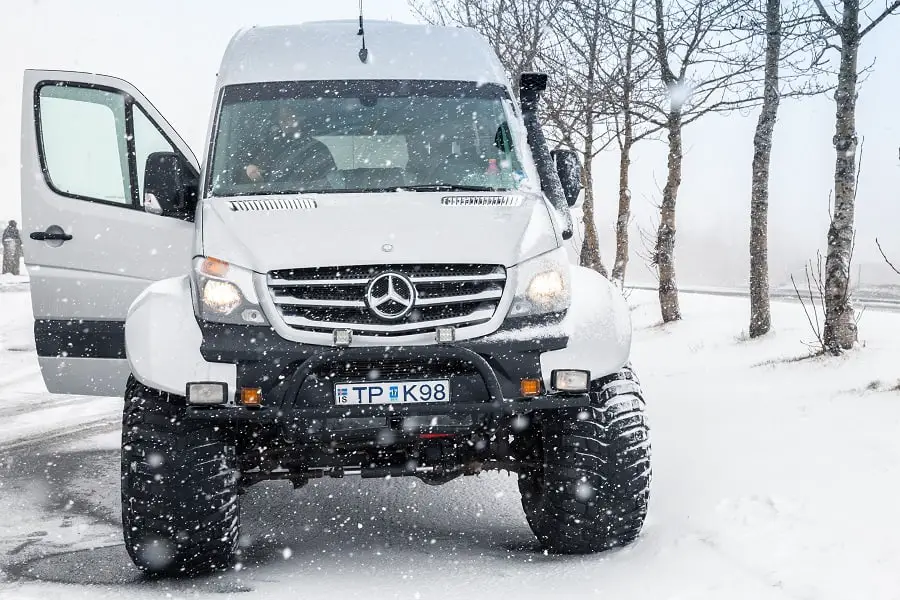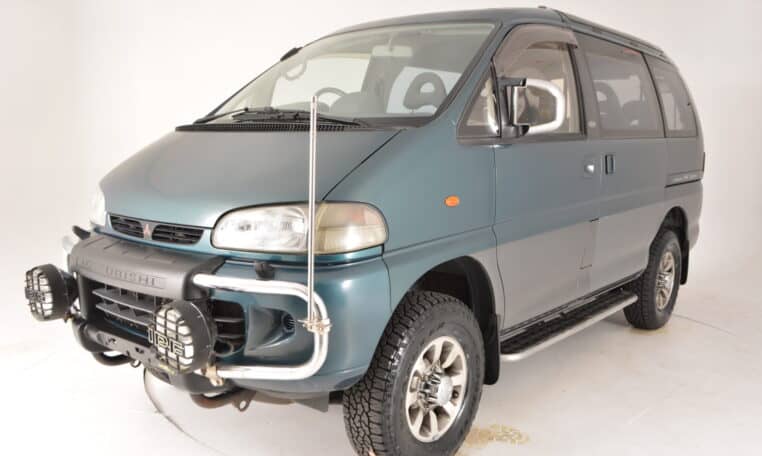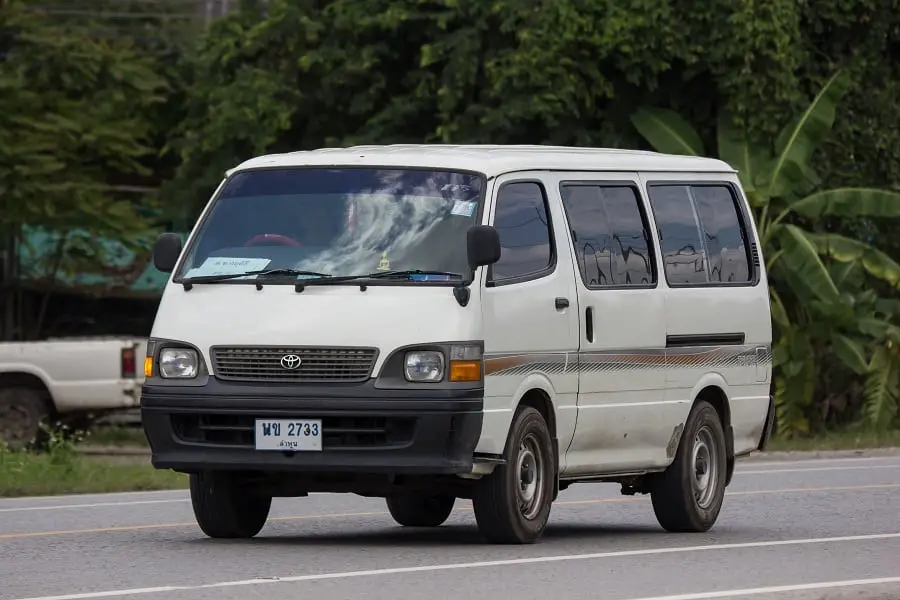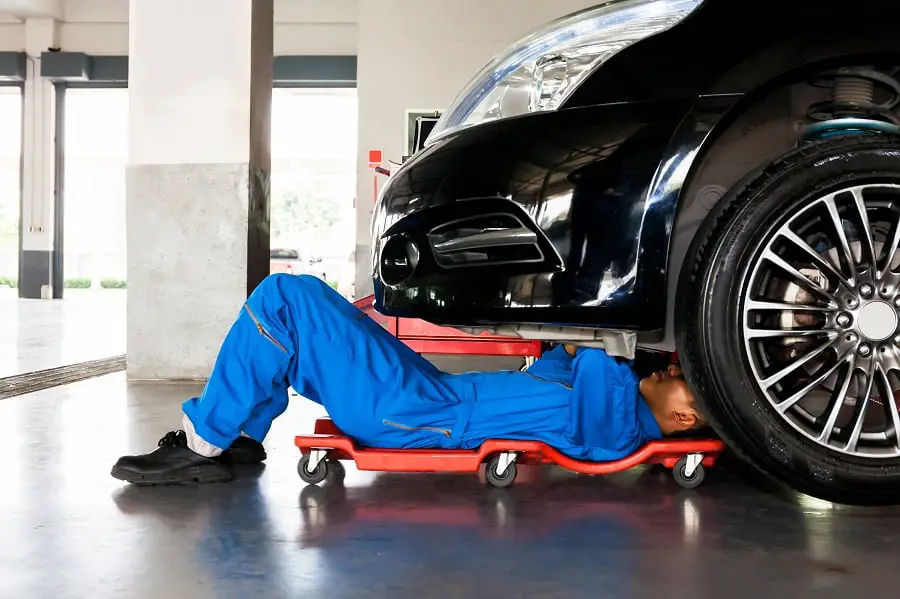
©eugenesergeev/123RF.COM
Modern SUVs, trucks, and off-road vehicles have a built-in 4WD system. But what about vans? There are overlanding vans that already come stock with four-wheel drive and don’t need any further modifications to go overlanding. These include Mercedes-Benz Sprinter Vans, Mitsubishi Delica, and Toyota Vans.
One can argue that 4WD vans are the ultimate overland vehicles because they have the huge cargo space for an ultimate camping experience and the capabilities needed for adventurous off-roading. Keep on reading to know which vans come stock as 4 x 4 or 4 wheel drive and what you can do to make your van 4WD.
Which Vans Come Stock With 4WD?
Many confuse 4WD with AWD. Yes, both of these systems, when engaged, will power all your wheels uniformly, meaning that each wheel will receive an equal amount of torque, thus will rotate at the same speed. However, AWD vehicles are not mainly for off-roading.
These vehicles are mainly used for daily driving and on-road to tackle snow or slippery roads. A 4WD vehicle is what you need to tackle deep snow, steep hills, and rocky terrain. These vehicles have larger wheels and higher ground clearance, but you only engage 4WD manually when you are off-road to save on fuel.
Although there are AWD vans, 4WD vans are the best for off-road driving and overlanding in general. But do any vans have four-wheel drive? In the United States, it is rare to see an overland van that directly comes from the manufacturer and is already a 4×4.
It is usually an aftermarket option, such as Class B motorhomes and conversion vans. If you’re looking for an overland van that comes stock with a 4×4 drive, below are some of your options.
Mercedes-Benz Sprinter 4×4

©eugenesergeev/123RF.COM
Mercedes-Benz Sprinter Model Vans are the leading overland vans in the United States that have a factory 4×4 option. This is no surprise at all because Mercedes-Benz is the only accessible manufacturer of 4×4 vans in the US.
In fact, most Class B motorhomes or camper vans, such as the Storyteller Overland and the Winnebago Revel, are built on a Mercedes-Benz Sprinter chassis or platform. You can say that they are the ‘original’ when it comes to 4WD vans for overlanding.
Sprinter Van is the overland van that can drive anywhere, whether that be in wet mud or dust-like sand. It has an Active Brake Assist that can warn you of incoming danger and hit the brakes for you.
Sprinter Van is a rear-wheel-drive, but when you engage the 4WD in rough terrain, the four-wheel drive will automatically send drive to the wheels that have the best grip for more traction and easy maneuvering. It also features low-range gearing.
Lastly, it has a ground clearance of about 8 inches, which is enough for overlanding. Sprinter Van is available in different height and length configurations.
Mitsubishi Delica

www.delicausa.com
Aside from the Sprinter Vans from Mercedes-Benz, there are other options when it comes to 4×4 vans. These are the eighties and nineties Japanese 4×4 vans. Since these are old models, they are rare items. Mitsubishi is a Japanese company that offers overland vans that are already 4×4.
However, since this company is based in Japan, the only way to get their 4×4 vans is to import the vehicle or buy second-hand ones. Mitsubishi Delica is available in several 4×4 van models, but the Space Gear and Star Wagon stand out the most.
Mitsubishi Delica Star Wagon L300 is a 1980 model that features a traditional 4WD system for off-road use. The 4WD system works part-time with both high and low ranges. This means that you need to engage the 4WD system manually when you drive off-road.
The suspension system consists of independent control arms with torsion bars for leaf springs. This 4×4 van is tall and heavy, so don’t expect too much speed. It can go up to 60 miles per hour.
The Space Gear model is just an upgraded version of the Star Wagon. Instead of leaf springs, it has coil springs for its suspension system. This model has a much rounder look and a revised unibody chassis.
Toyota Van

Toyota also boasts a series of 4WD vans. Toyota started in 1967, but only in 1977 did they start to release vans that were 4x4s. Their second-generation vans feature a traditional 4WD system that must be manually engaged for the engine to send power to all the wheels uniformly.
After this model, Toyota then released third-generation 4WD vans, which were then followed by the fourth, fifth, and sixth generations. All these vans are rear-wheel drive, but with the 4WD system, their axles can be locked together for better traction off-road.
If there is one remarkable 4×4 van model from Totoya, that would be the 1994 Toyota HiAce 4×4 van. This is another old model and a vehicle coming from Japan, so expect that it’s difficult to find in America. This model is from Toyota’s fourth-generation HiAce. It features a 3L turbodiesel engine and a huge cargo space inside that can be turned into a living space or a bedroom.
Can You Convert 2WD Vans Into 4WD?
Vans make perfect camping vehicles because they offer a huge amount of space for a bedroom or a living area. They can accommodate your whole family or group of friends. However, it’s difficult to find a model that has factory 4×4 options, unless you have the money to afford the three models mentioned above.
Most vans are 2WDs, specifically, rear-wheel drive. If you want to take advantage of the huge space that vans offer but are discouraged by their capabilities, you have two alternatives. You can either buy a Class B motorhome, which is just a camper van, or convert your 2WD van into a 4WD.
Yes, you can convert a 2WD van to a 4WD. There are two ways you can do it. You can either add a front axle to the 2WD or place the body of the 2WD onto a 4WD frame.
Now you might be wondering, will this project be easy and practical for you?
Well, if you go to an automobile repair shop or consult an auto mechanic you know, chances are they will advise you to just sell your 2WD van and purchase a used 4WD because this is a much more practical choice.
Converting a 2WD van to 4WD is not an easy task. The process is complicated and necessitates technical knowledge and the help of a professional so that you can ensure efficient performance even after several modifications.
What Do You Need To Convert 2WD Vans To 4WD?
Now, if you’re 2WD van is valuable to you and you are willing to invest money to make it capable off-road feel free to proceed. You can either do a DIY 4WD conversion or you can just send your 2WD van to a 4×4 conversion company like Sportsmobile or Advanced 4×4 Vans. If you have knowledge of automobiles and you have experience working with different vehicles, the process and the tools will look familiar to you.
Level of Skills Needed
You can only be confident about converting your 2WD van into a 4WD when you at least have technical knowledge of automobile parts and the systems behind how the vehicle works.
Of course, knowledge is not enough because everything changes in real-life applications. If you have experience working with cars before and you can do simple repairs, or you have probably spent all your life in an auto shop, or even better, if you are a mechanical engineer, then the process behind 4WD van conversions will just be easy for you.
Front-axle alignment is a very important part of the conversion process. Technical knowledge, experience, or expertise is needed to successfully convert a 2WD van to a 4WD.
Tools for DIY

If you have the skills needed to convert a 2WD to a 4WD van, then the next things you’ll need are the tools and the parts. You will need assistance in removing and replacing parts. You also need to bring your 2WD van to a place where you can find tools or technology to make the job easier for you. It is better to do the conversion in a mechanic’s shop or an auto shop. If you have the tools in your garage, then you can do the project there.
The first thing you have to do is source your needed 4×4 parts. You can find 4×4 parts in companies that also offer conversion services or in a junkyard, for a much cheaper option. You need donor parts from the exact same model as your 2WD van. Of course, they must be in good condition. Parts you’ll need from an old 4×4 include 4WD shifter, front driveshaft, front axle, and springs.
Other parts you need are the drivetrain, transfer case, suspension, transmission, electronics, engine power, and differentials. For a much easier and proper assembly, there are aftermarket companies that offer kits for DIY 4×4 van conversions, like Ujoint Off-Road E series 4×4 Conversion. When you use a conversion kit, you’ll need to entirely replace the suspension system because of the added weight.
The conversion process requires a bit of metal fabrication and some reinforcement to accommodate the leaf spring and solid axle conversion. You also need to change the transmission, master cylinder, steering box, and brake lines to adjust to the new components. You can find helpful videos on Youtube on how to do a 4×4 van conversion in easy steps.
How Much Will It Cost To Convert To 4WD?
Just by looking at all the tools, parts, and other accessories you need for the 4×4 van conversion, you can already tell that the process not only requires a lot of skills, time, and effort but also a lot of money. Unless you have a donor car to source all the parts, converting your 2WD van to a 4WD is an expensive vehicle modification.
The cost of your needed parts will also depend on the model of your vehicle. For example, Toyota has more affordable parts than Mercedes-Benz. If you want an estimate, converting your 2WD van to a 4WD can cost from $2,500 to $15,000. 4×4 conversion companies’ pricing starts at $11,000 and up.
Final Thoughts
There are overlanding vans that already come stocked with a four-wheel drive. A 4WD drivetrain will let you explore hidden gems in remote destinations unreachable by 2WDs. Mercedes-Benz Sprinter Vans, Mitsubishi Delica, and Toyota Vans have factory 4×4 options. If you want to convert your van to a 4WD, you need skills, knowledge, and tools to successfully do it.
Just remember that when you install parts for your 4WD conversion, you have to adjust the other components of your car to maintain efficient performance. This task is not a simple process and requires a big amount of money, but if you want a rugged and capable van for your next month-long overlanding trip, then it is definitely a worthwhile investment.

